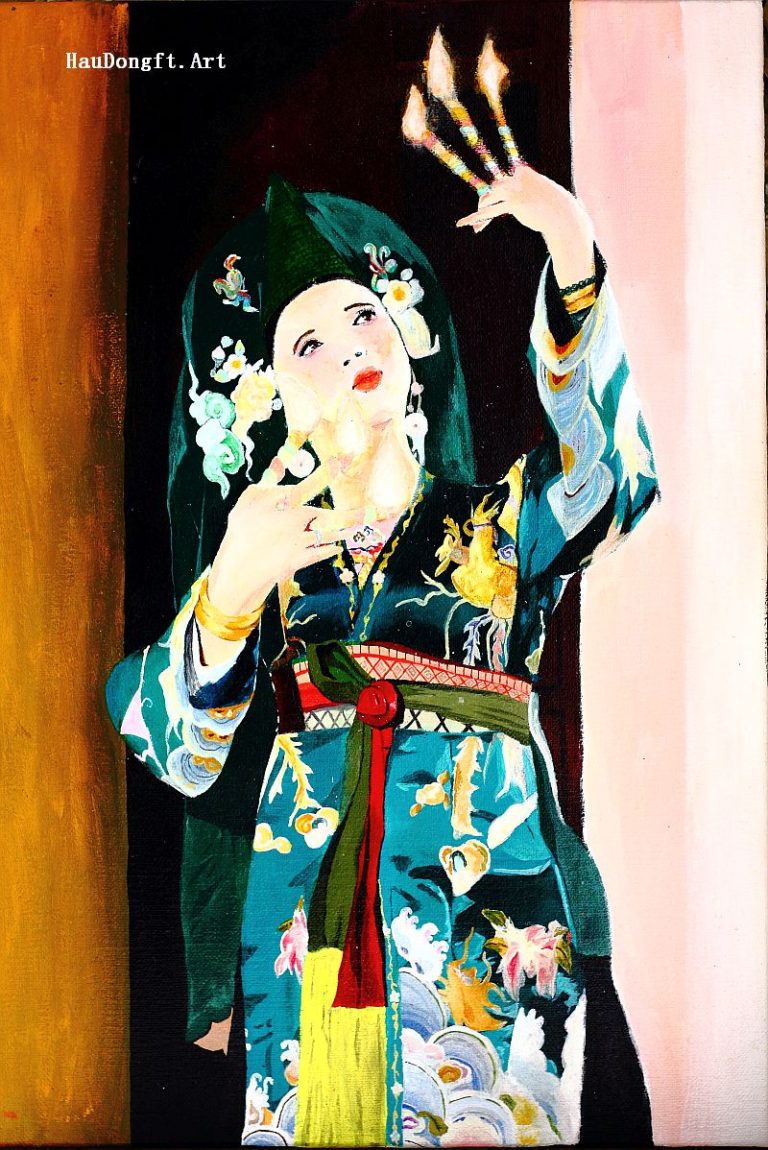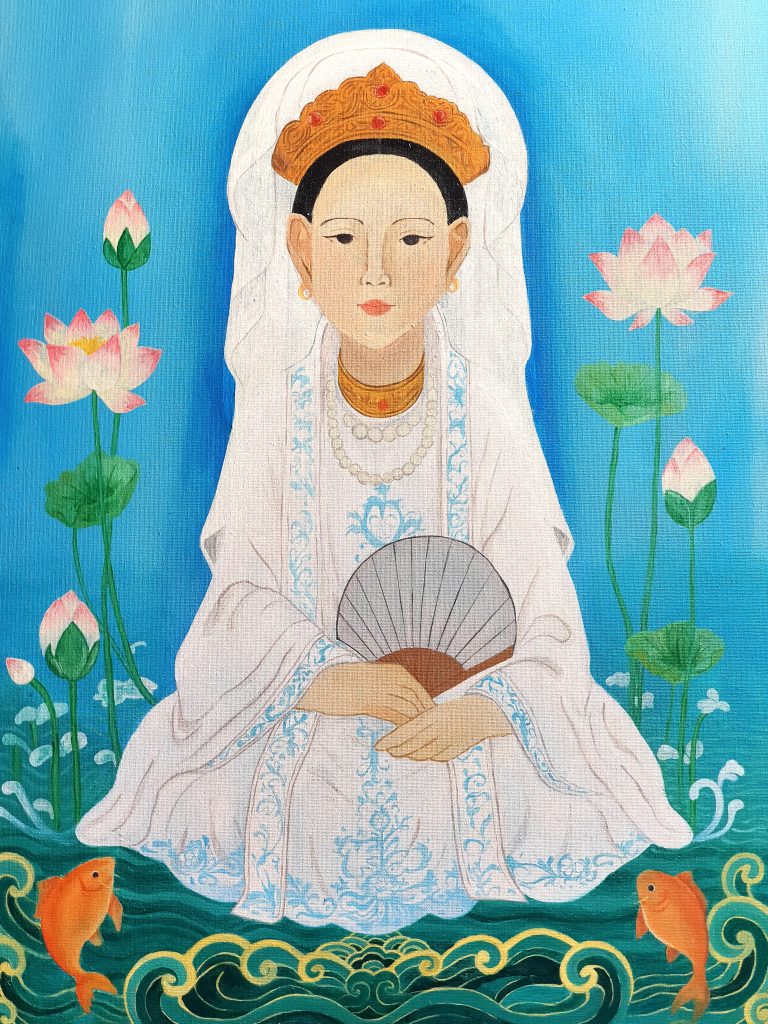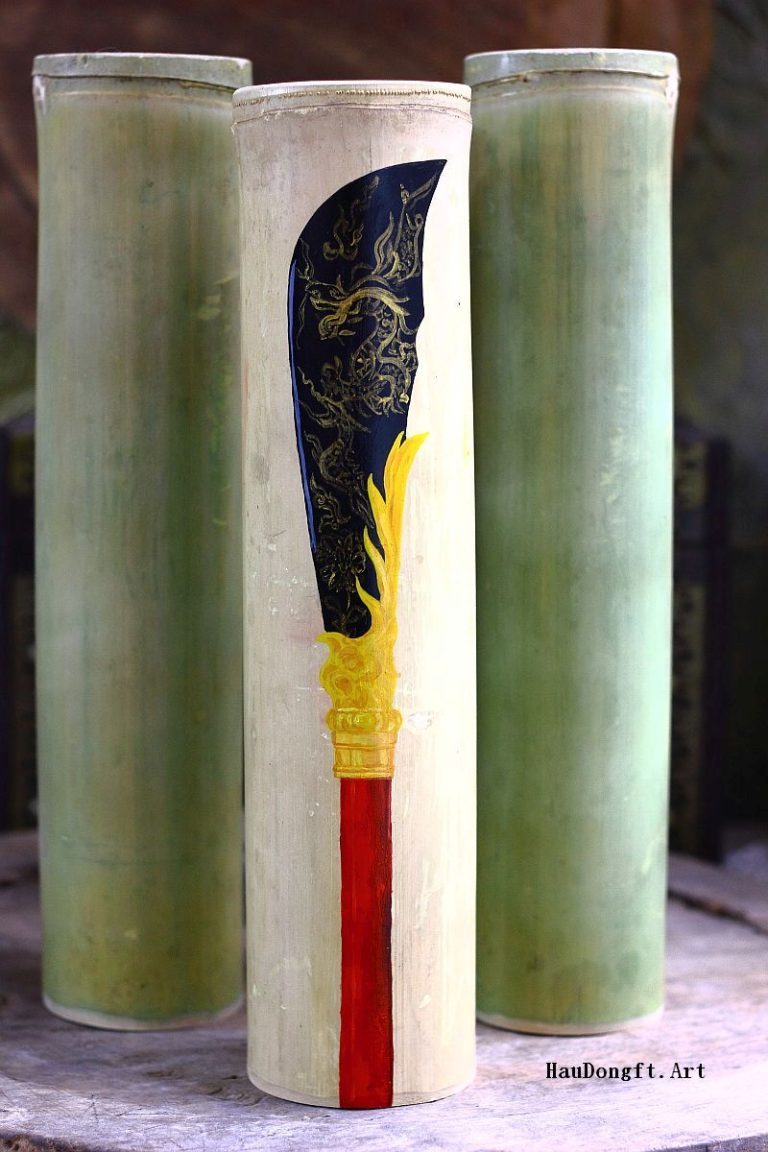
Zone 1: Costume & Identity
The Costume & Identity Zone is designed to immerse participants in the aesthetic and symbolic world of hầu đồng costumes while highlighting their deep connection to identity, spirituality, and cultural continuity. Costumes in hầu đồng are not merely decorative; they embody divine presence, gender fluidity, social status, and the transformative power of performance. This zone will serve as both a visual spectacle and an interactive learning space, allowing participants to explore how clothing mediates between self and spirit.
Participants will:
3. Core Component
a. Exhibition Corner (Field trips to Vietnamese Women’s Museum & Huan Oanh Ritual Academy)
b. Interactive Dressing Booth (at Huan Oanh Ritual Academy)

c. Identity Reflection Table (Online)
“How does changing costume change your sense of self?”
“If you could embody a divine role for a moment, which one would you choose, and why?”
d. Performance Projection
5. Educational & Preservation Value
6. Evaluation & Impact
7. Outcome
Participants emerge with a deeper understanding of how hầu đồng costumes act as more than visual spectacle. Through wearing replicas, they realize that costumes can reshape self-perception and mediate between ordinary and divine identity. Many leave with reflections on gender, power, and transformation, written on the collective identity wall, showing how personal imagination connects with cultural symbolism.
Cognitive: Learn about the symbolic role of colors, fabrics, and accessories.
Emotional: Feel empowered or playful when trying on deity-inspired costumes.
Cultural: Appreciate costumes as intangible heritage tied to Vietnam’s Mother Goddess tradition.
Psychological: Recognize the impact of external form on inner identity and self-expression.
A reflection essay by a group of 4 participants after the workshop:
During a recent workshop on preparing ritual costumes for hầu đồng, we had the chance to witness and practice the intricate art of folding and arranging khăn chầu – the ritual headdresses worn by mediums. What began as a hands-on experience soon unfolded into a deeper understanding of how these textiles embody history, symbolism, and spiritual devotion.
Types of Khăn Chầu
In hầu đồng, the headdress is not simply decorative. Each type of headdress carries specific meaning and is worn during particular ritual moments:
Khăn vành (round turban): A simple, circular turban, often black or red, symbolizing solemnity and grounding. Mediums wear it during the opening stages or less ornate rituals.
Khăn xếp (folded turban): Made by carefully folding fabric into even pleats, this style requires patience and precision. It emphasizes neatness, discipline, and respect.
Khăn phủ diện (face-covering veil): Richly decorated with embroidered sacred patterns, this veil is used when mediums embody deities of higher rank, enhancing their aura of grandeur.
Khăn lối (elaborate style): Often adorned with flowers, pins, and bright ornaments, khăn lối reflects creativity and divine beauty, used for spirits associated with grace and femininity.
Each type not only differentiates deities in the Mother Goddess pantheon but also establishes a visual and spiritual atmosphere, signaling shifts in the ritual flow.
Symbolism and Ritual Value
The process of arranging a ritual headdress is itself a sacred act. Folding fabric, fixing pins, and placing flowers are not random aesthetic choices; they embody gestures of reverence. For example, vibrant colors like red, purple, and gold represent power, prosperity, and divine presence. Ornaments such as orchids, beads, or silver tassels are chosen not only for beauty but also for their associations with purity, fortune, or protection.
Mediums believe that the proper dressing of khăn ensures harmony between the human and the spirit world. A poorly tied khăn could be seen as disrespectful or inauspicious, while a carefully arranged one helps invite the deity with dignity.
Transmission of Knowledge
At the workshop, we realized that this craft is preserved not through books but through direct practice and mentorship. Experienced practitioners guided newcomers in folding techniques, correcting mistakes, and explaining symbolic details. Each adjustment, refolding a pleat, repositioning a flower, was an act of teaching as well as devotion.
Conclusion
The ritual headdresses in hầu đồng are far more than accessories. It is a textile language of faith, identity, and heritage. Every layer of fabric reflects centuries of cultural memory, while every flower or pin represents an offering of respect to the divine. Participating in the workshop revealed to me that behind the dazzling stage of hầu đồng lies a quiet world of meticulous preparation, where culture is preserved one fold of fabric at a time.










© 2025 Hau Dong Featuring Art. All rights reserved. Contact